| ||||||
| Running Time: | 5:58 | Release Date: | ||||
| In the second half of the 18th century great changes were unfolding, so great that they would shape the world as we know it today. The tale we tell here is of the American Revolution. Join us as we follow the momentous events that led to the birth of a nation. | ||||||
About The Video |
The French Indian War |
In the mid 18th century there was widespread conflict in Europe, this is often called the "The Seven Years' War". The impact of this war spread to North America, and lasted between 1754-1763, it is known as the "French and Indian War".
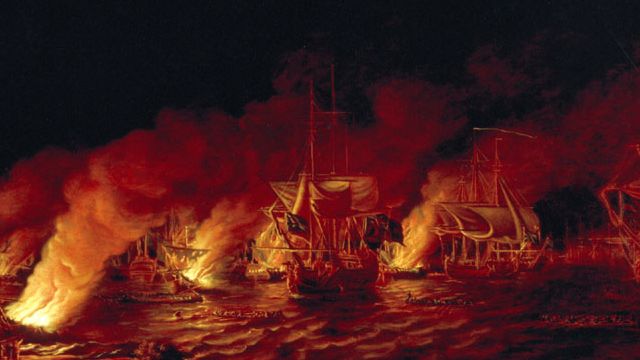
The British, and their colonists, were fighting against an alliance of French and Native American forces. The war was about dominance of North America.

The Stamp Act |
When eventually the war was won, despite being victorious, Britain was left counting the cost of the conflict.
To partly fund the future costs of protecting their American territories, King George III and his Government decided to raise money by taxing the colonists.

In 1765, Britain introduced "The Stamp Act", this required that many printed materials, such as legal documents, magazines, newspapers and even playing-cards had to carry a tax stamp.

This tax was deeply unpopular with the colonists. Mainly their objection was not about the paying the tax, for their protection, but the fact that they had no representation in the British Parliament. They were being ordered to pay taxes by a government, who allowed them no say in the matter.
There were protests and many colonists refused to buy British goods. The "Stamp Act" began to severely damage trade between Britain and her colony.

After less than a year, realizing the trouble that it was causing, Parliament repealed the tax. But, not learning the lesson of the "Stamp Act", soon new taxes were levied. They were known as "The Townshend Acts", which were named after the Chancellor of the Exchequer.

Many essentials were taxed including paper, glass and tea. The state of affairs was very much like before, with colonists boycotting British goods and there were outbreaks of disorder.
The Boston Massacre |
In Boston March 5, 1770 a crowd started abusing British troops. After insults were exchanged, snow balls and other small objects, were thrown at the troops. The situation which was already tense, boiled over and in the confusion the British opened fire.

Five men were killed by the British troops, one of them was Crispus Attucks. It is thought that Crispus Attucks was the first of the five to be killed. Little is known about Attucks apart from that he was of mixed race. It is believed that he was of both African and Native American descent, and quite possibly a runaway slave.

The event soon became known as the "The Boston Massacre" and Paul Revere made a famous etching of the British troops opening fire on the crowd.
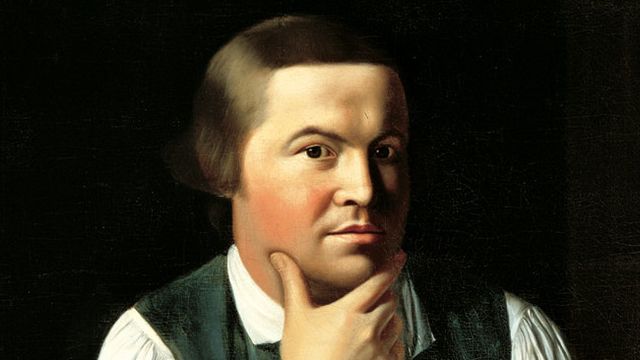
The etching is highly exaggerate. This depiction of the "Boston Massacre" stirred up further hatred of the British troops.

The Boston Tea Party |
Another momentous event occurred in Boston. This time it was on December 16, 1773. Colonists, some dressed as Native Americans, attacked three cargo ships that were carrying tea. The attackers did not want the tea to land, as when it was sold taxes would be paid to the British Government.
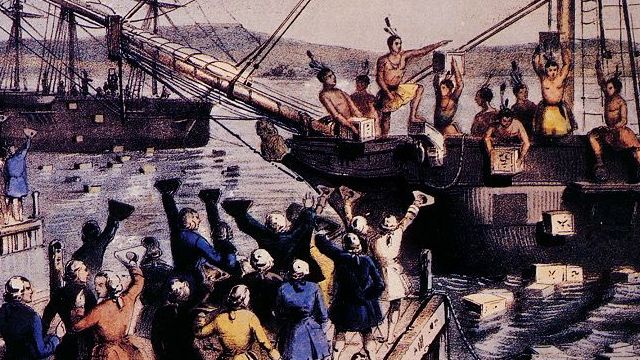
The groups solution in protest against the Tea Taxes was to throw 342 chests of tea into the harbor. No one was injured during this act of protest, but it had major repercussions.

The British Government responded by what were known as the "Intolerable Acts", which removed a lot of liberties. One of these was to close the port in Boston, until the money for the tea had been paid. This caused great hardship.
The situation was becoming tense and the colonists attacked taxmen, tar and feathering them.
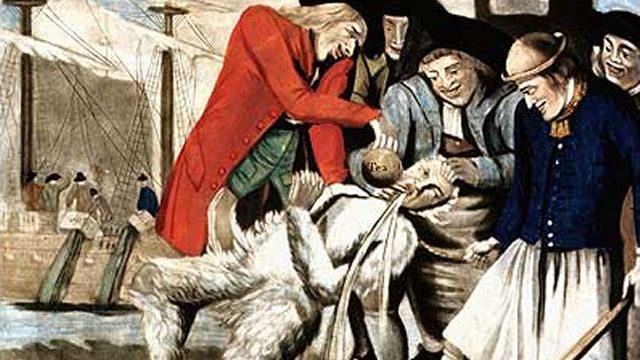
Thomas Paine |
In January 10, 1776 Thomas Paine published a pamphlet called "Common Sense". Thomas Paine was born in England, but had recently emigrated to the colonies. Paine was a radical and a revolutionary.
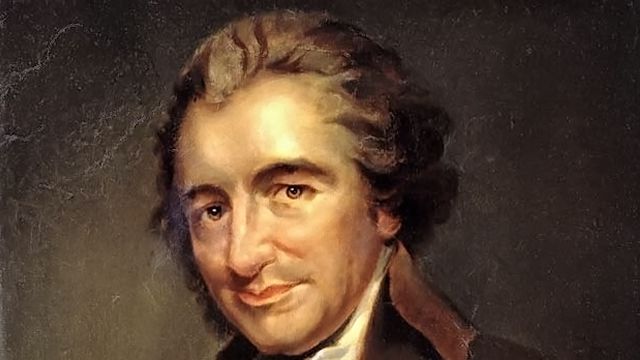
In his pamphlet, "Common Sense", Thomas Paine argued that the solution to problems between the American colonies and Britain was independence. "Common Sense" became a massive best seller.
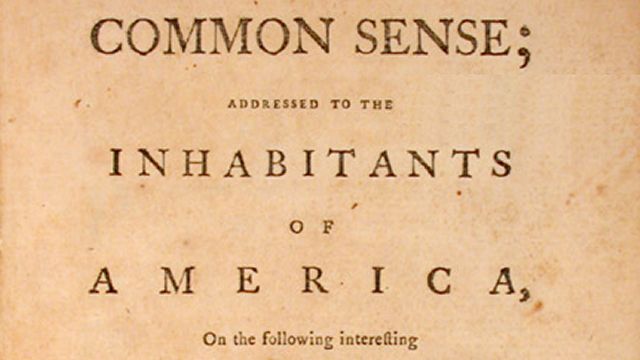
The Declaration Of Independence |
By 1775 the War Of Independence had now begun, and the thirteen colonies met for "The Second Continental Congress". At this congress they discussed how to proceed and what their relationship with Britain would be.

On July 4, 1776 the thirteen colonies issued a statement. This announced that they were now independent states, and broke their ties with Britain.

This famous document became known as "The Declaration of Independence" and it was eventually signed by 56 delegates.

"The Declaration of Independence" was mainly written by Thomas Jefferson, who would become the third President of the United States.
Jefferson was a great intellectual, with many interests including inventing, archaeology, politics, and architecture. Thomas Jefferson was one of the leading thinkers of his generation.

The "Declaration of Independence" includes this famous statement:
"We hold these truths to be self-evident, that all men are created equal, that they are endowed by their Creator with certain unalienable Rights, that among these are Life, Liberty and the pursuit of Happiness."
Unfortunately, it would be many years before Native and African Americans could enjoy these rights.

Slavery In The United States Of America |
It would take almost ninety years after these words are written for slavery to end.
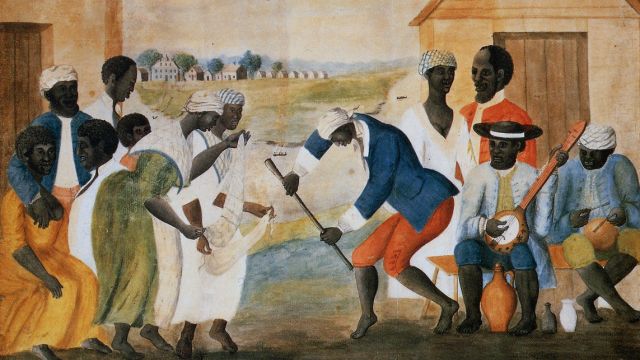
Much of America's economy was based on the use of slave labor, especially in plantations.

The slave trade was also highly profitable for the British Empire.

During the "War Of Independence" both the British and the colonists had slaves fighting for them. They were mainly enticed by the promise of freedom from slavery. This did not happen.

The Continental Army |
The colonists' forces were called "The Continental Army".
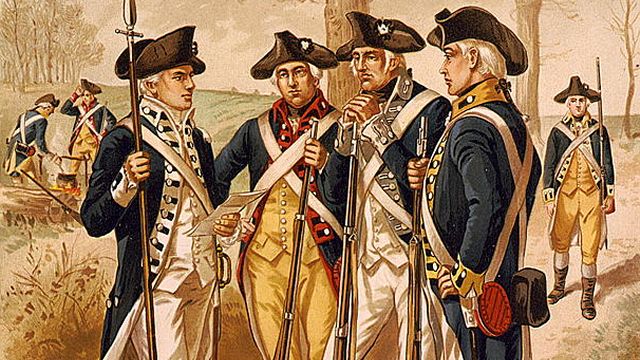
Leading the army was George Washington, who would become the first United States President.

George Washington learnt a lot of his military skills when fighting with the British, in the French and Indian War.

At first the Continental Army was ill-disciplined, but over time it became a formidable force. Washington was a tricky and slippery opponent, often withdrawing his troops from battle if he felt they were at a disadvantage, then moving to another position ready to engage again.

The British underestimated their foe and after initial victories they began to loose battles. George Washington, and his army, were proving to be very determined. They were also spurred on by fighting for their freedom.
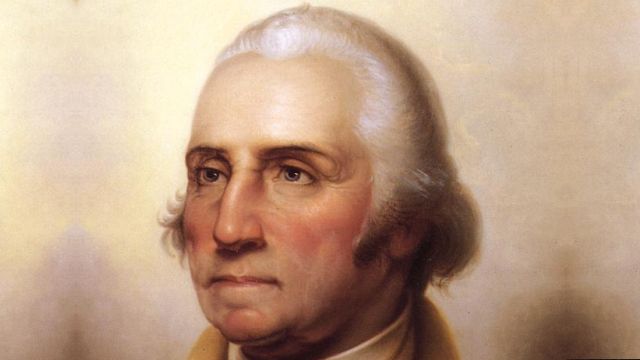
The War Ends |
In Yorktown, Virginia 1781 after a long siege the British Army surrendered. This decisive victory effectively ended the conflict.

Against the odds the colonists had beaten the might of Britain and a new nation was born.

Cutting Room Floor |
Benjamin Franklin |

Benjamin Franklin was another highly influential Founding Father. Like Thomas Jefferson he was multi talented with a huge range of interests. During the drafting of the Declaration of Independence he was suffering from gout, so did not attend many meetings. He did however make some minor amendments to the document.
Betsy Ross |
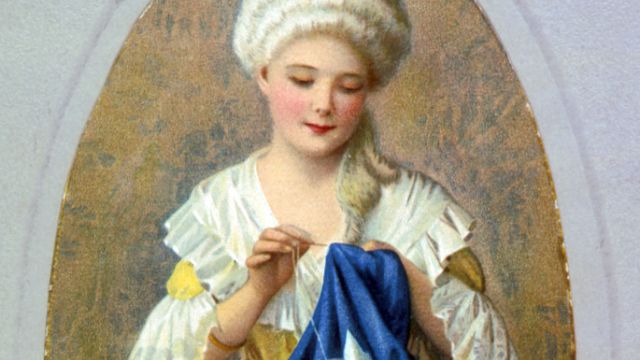
Betsy Ross, (born January 1, 1752 died January 30, 1836) is credited with making the first American flag.
Betsy, who was from Philadelphia, Pennsylvania ran an upholstery business. Legend says George Washington met with Betsy Ross, at her upholstery business. The result of the meeting was Betsy Ross sewing the first U.S. "stars and stripes" flag.
It is not known if this meeting really happened, but it is noted that Betsy Ross did indeed make flags for the United States of America.
Liberty Bell |

Probably the most famous symbol of the American Revolutionary War is the Liberty Bell. Tradition states that the Liberty Bell was rung on July 8, 1776 to summon the citizens of Philadelphia for a reading of the "Declaration of Independence". Before that it had also been rung to announce the "First Continental Congress" in 1774, and to mark the end of the "Battle of Lexington and Concord" in 1775.
It now thought that this may just be a legend, but the Liberty Bell still remains a symbol of America's independence.
Curious Facts |
Interesting Links |
General |
The Boston Massacre |
The Boston Tea Party |
George Washington |